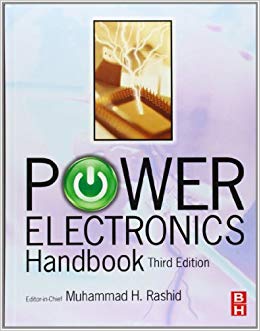Power electronics is a rapidly growing area in terms of research and applications. The use of modern electronics technology to convert electric power from one form to another is common with a variable output magnitude and frequency. Power electronics have many applications in our everyday life like air-conditioners, electric cars, subway trains, motor drives, renewable energy sources, and power supplies for computers.

The Power Electronics Handbook covers all aspects of switching devices, converter circuit topologies, control techniques, analytical methods, and some examples of their applications.
Power Electronics Handbook Features:
- Prominent professional from the field of power electronics has collaborated to write this book.
- The book cover theory and laboratory experiment plan.
- Introduction on Novel artificial intelligence-based soft computing application in motor drives.
- Numerous chapters are revised
- The discussion is extended to energy sources, energy storage, and electric power transmission.
Contents:
The Power Electronics Handbook starts with an introductory chapter and moves on to cover topics on power semiconductor devices, power converters, applications, and peripheral issues.
The book is organized into nine areas, the first of which includes chapters on the operation and characterizations of the following power semiconductor devices: power diode, thyristor, gate turn-off thyristor (GTO), power bipolar transistor (BJT), power MOS-FET, insulated gate bipolar transistor, MOS-controlled thyristor (MCT), and static induction devices.
The next topic area includes chapters covering various types of power converters, the principles of operation, and the methods for the analysis and design of power converters. This also includes gate drive circuits and control methods for power converters. The next two chapters cover applications in power supplies, electronic ballasts, HVDC transmission, VAR compensation, pulse power, and capacitor charging.